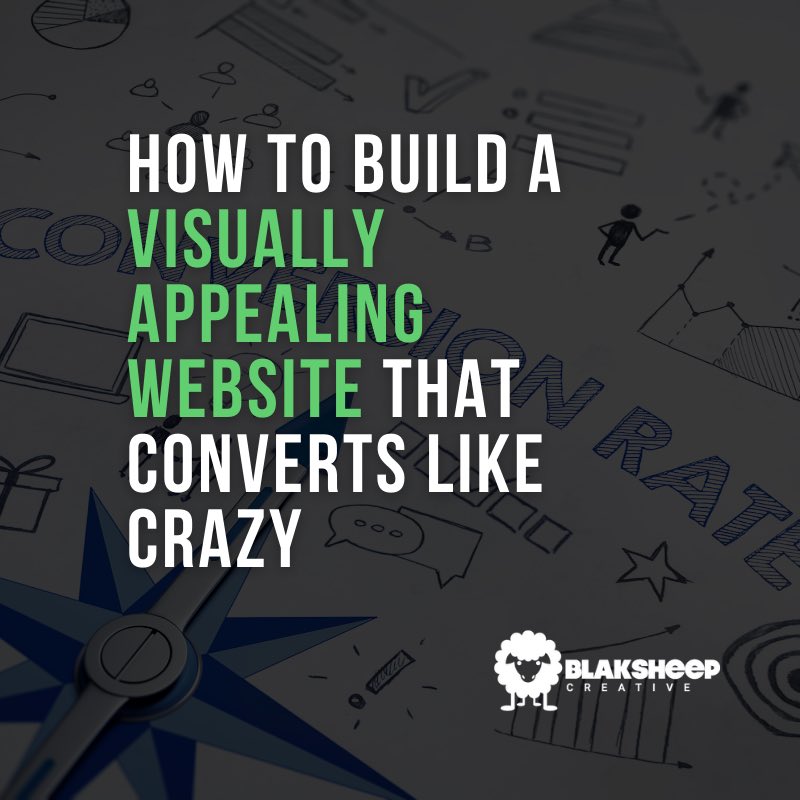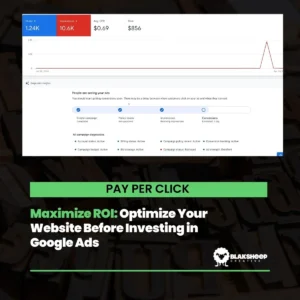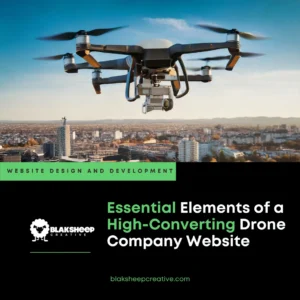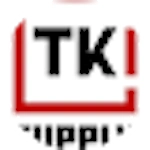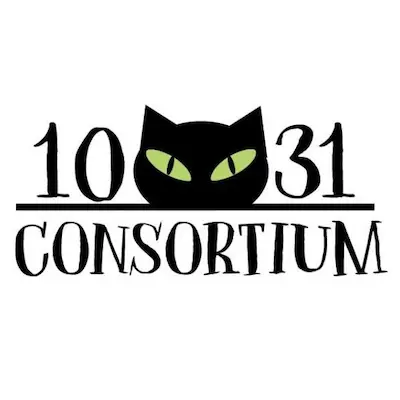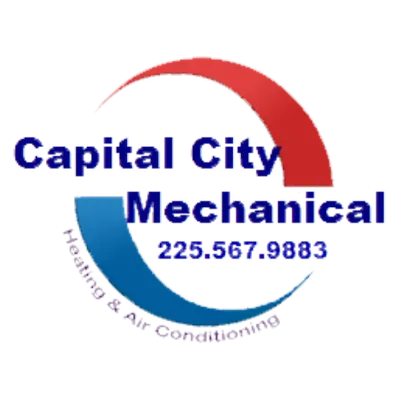This article will discuss how to build a visually appealing website that converts like crazy. A few key points of focus are design, content, and usability.
We’ll take a look at the importance of each and provide some best practices for you to use to increase your own conversion rates.
The principles discussed below can be applied to any type of company looking to increase their online conversions; from e-commerce sites, lead gen websites, marketing blogs, or affiliate sites. Once you know these fundamentals, you’ll be able to create a highly converting site in no time at all!
Understanding Conversion Rate Optimization
Before we get started on creating a high converting site, it’s essential to first understand what conversion rate optimization is. Conversion Rate Optimization (CRO) is the process of increasing your website’s overall conversion rate.
The primary goal with CRO is not necessarily getting more visitors but instead improving the quality of each visitor you receive. It’s all about getting more of the right kind of traffic. By successfully increasing your conversions, you will increase your sales and profits through targeted visitors interested in what you have to offer.

More specifically, CRO is a series of processes designed to help improve conversions by lowering the bounce rate, increasing average time on site and average pages per visit, reducing cart abandonment, increasing email signups, and more.
For this article, we will be focusing on conversion-optimized web design that results in increased conversions. A few things to note is the fact that CRO is an ongoing process. You don’t just get it right the first time or outsource it to someone else and then leave it. It’s a continually evolving process that requires continual testing to improve your site further over time.
As you begin the process of creating an optimized website, CRO will have a significant impact on what you do with your design, content, and usability. The goal is to create a well-thought-out conversion funnel that invites targeted visitors to stay on your website, convert, and signup for your email list.
The Conversion Funnel
Before you get started with the design of your site, it’s important to have a solid understanding of how users will flow from one step to another. The conversion funnel is what we call this process. It includes each step that a visitor takes from the beginning to the end goal.
For this example, let’s say that your goal is for people to purchase a product or service, download an ebook or get in touch with you through email and/or social media.
Making it easy for visitors to take the next step is a key component of conversion optimization. This means that each page/step in your conversion funnel must be designed to get the visitor to take the desired next step. To do this, you’ll need various landing page variations and tools that we will discuss later on.
For instance, let’s assume our goal is for readers to signup for an ebook offer and download it: They land on a homepage that tells them about the ebook and provides a big, bold button that says something like “Download Now.”
The visitor clicks that call to action button which takes them to another page that asks for their email address. They enter their email address and are taken to a confirmation page to confirm their subscription via email or take them back to the home page.
Can you see how the conversion funnel design is a critical part of this entire process? Each step in your conversion funnel should be designed to deliver the visitor to the next step. Over time, it will build a highly converting website.
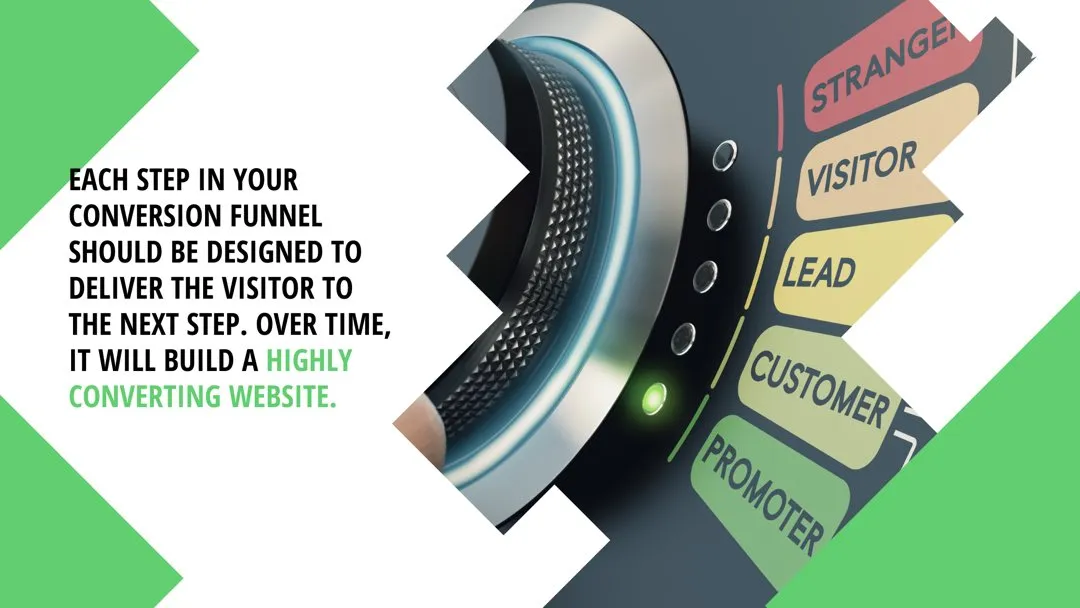
Now that you understand conversion rates and how they factor into your website, let’s discuss the main components of high converting sites that will help you get started on the right path.
The Four Pillars Of A Conversion-Optimized Website
There are four essential components to every high converting site:
Visually Appealing Design
As we learned before, an attractive site can boost conversions. We will discuss how to achieve this in a minute.
High Converting Content
The purpose of your website has an impact on the content that you offer. For instance, if you have a business selling fitness equipment, your lead magnet might be an ebook entitled “How To Start Your Own Fitness Business” or something similar.
That way, when users enter a lead magnet offer, they have an idea of what to expect. If you are selling services like graphic design or web development, then your lead magnet might be something like a free report about how to create simple WordPress themes for new businesses.
When writing content, it must create the right expectations in the minds of your visitors.
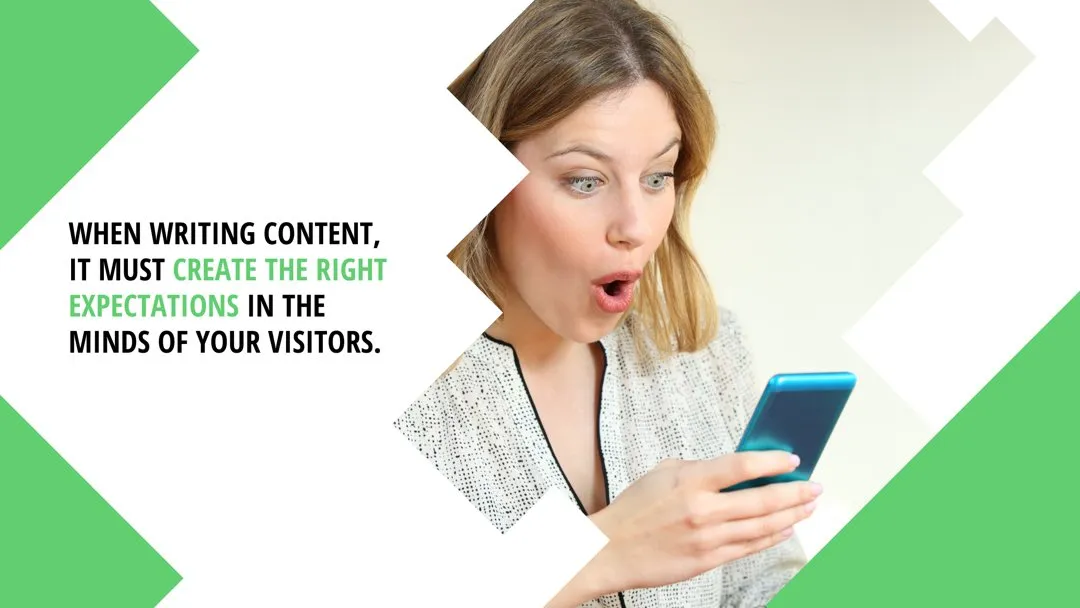
High Converting Call To Action (CTA)
Every page on a high converting website contains some sort of CTA that asks the visitor to take the next step, be it downloading an ebook or signing up for an email list. This is where your conversion funnel comes into play. Each step in this process must be designed to guide the visitor further into the conversion funnel.
Call to action buttons are great for this purpose and are an important element to increasing conversions.
High Converting Lead Magnet
The lead magnet is a free gift (ebook, video/audio file, report, etc.) that you give away in exchange for contact information like an email address, phone number, or full name. It’s used as bait to get people to enter their contact information into your site’s forms so you can market to them later and send them valuable information, updates about your business/products, etc.
For instance, if you wanted to attract blog subscribers, you might offer a free ebook titled “5 Ways To Improve Your Blogging Skills”. It would contain 5 useful tips for people who want to improve their blogging skills. That way, when they download the ebook, they know it’s worth their while.
You can also start by giving away a FREE report or ebook (a lead magnet). You can capture their email address as an opt-in CTA on the page to make contact and get that valuable contact information you desire.
Something like “Download Your Free Report/Ebook Now” with your email address next to it. I’ve seen this one work time and again, so give it a try.
Looking to Take Your Traffic Strategy Even Further? If you’ve learned the essentials of conversion optimization, it’s time to dive deeper. Maximize your Google Ads ROI and ensure your website is primed for success. In our latest post, we explain how to get the best results from Google Ads so that you can turn your traffic into real conversions. Click the link above to read the article now.
Now that you understand what components make up a conversion-optimized website let’s take a look at how to create them.
Determine Your Website’s Goal
The first thing you need to do is determine what your website’s goal is. This may seem obvious, but it’s important to be as specific as possible right from the start. Whether you want more traffic, leads, or sales, it is much easier to reach your goals if you set them properly upfront.
“But I don’t know what my website’s goal is.” Don’t worry if this is the case.
There are many different ways to define goals. For example, you can have a short-term plan, which you want to accomplish in the next month. Then you can have a long-term goal, which should be something that takes longer than a month to achieve.
Alternatively, if you already designed your website but simply want to improve it, then you can define your goals as things that need to be fixed or improved.
Identify your target audience so that you know who your content should be geared towards.
Now that you know your goal use a keyword research tool (we suggest Ahrefs or SEMRush) to find the best keywords and phrases related to what you are trying to accomplish with your website.
Then determine who your target audience is so that you can optimize the content on your site to speak directly to them. Your target audience must be clearly defined; otherwise, you won’t be able to create the best content possible for them.
Keep in mind: your website should speak directly to your target audience and not everyone else!

Understand Website Conversion Metrics
Once you have set up goals for your site, it is time to determine what the core conversion metrics are. These are the numbers (or other values) of interest that will tell if you are on track or if you need to make changes.
“What should I measure?” The easiest way to answer this is to look at the resources available for your specific business niche. For example, if you create a conversion-optimized eCommerce site, it would be appropriate to focus on average order value, the number of items purchased, and average time on site.
These are just some examples to illustrate the point. In reality, there is a massive amount of conversion metrics that you can choose from, so it’s important to prioritize and pick the ones that make sense for your business niche.
For some helpful insights into which conversion rate optimization metrics are most important for your website or marketing campaign, see Neil Patel’s article, “8 Most Important Conversion Rate Metrics You Should Be Tracking.”
Creating a Create a Converting Website
Now that you know your goals and the conversion metrics for your website, it is time to begin building. As mentioned previously, design matters. This is particularly true in terms of conversions because numerous studies prove that a visually appealing site will increase your conversion rate and trust.
An excellent example of this comes from Jakob Nielsen’s article titled, “Website Design for Increased Conversion,” where he states, “Highly attractive sites generate more than twice as much revenue per visitor as unattractive ones. The reason may be that more careful design makes the site easier to navigate and understand, so visitors stay longer and convert more often.”
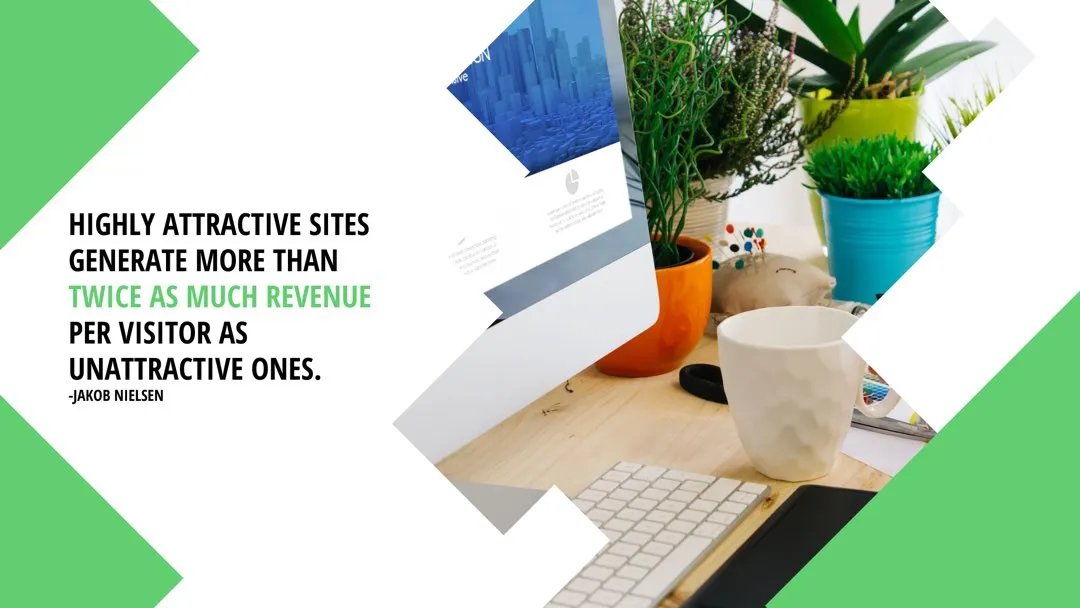
With that in mind, we recommend you build a visually appealing website by making the following suggestions:
- Make sure your site is responsive and mobile-friendly
- Give the website a memorable yet straightforward design that doesn’t distract from the conversion goal (e.g., an eCommerce checkout page)
- Apply user interface design principles to create interactions that are easy for visitors to predict
- Make sure your site loads quickly and is usable offline
- Use high-quality images and content
- Provide a consistent user experience across all channels (e.g., desktop, tablet, mobile)
Create a landing page for your website
Now that you have a visually appealing site, it is time to create the page on which all of your marketing efforts will be focused. This means creating a dedicated landing page or splash page for the website.
Why?
Landing pages are a great way to ensure your message is getting across most effectively and clearly. Plus, they allow you to display specific information aimed at different types of customers.
For more insights into optimizing landing pages and boosting conversions, check out our detailed article on What is the Difference Between a Pillar Page and a Landing Page?.

For example, if you operate an eCommerce website selling women’s clothing, you may want one landing page for male shoppers and another for female shoppers.
Why?
Because it has been proven that men and women interpret messaging differently.
A great example of this comes from a study by Optimonk, where they found that “when targeting men, messages about problems tend to be better than messages about solutions. However, for women, the opposite is true: solution-based messaging outperforms problem-based messaging.”
Since you know your target audience, you can now create a landing page focused on the appropriate type of customer.
For example, if you are selling women’s clothing, your landing page may contain a highlighted department with a sales promotion or special offer for women’s clothing. Once you create your landing page, make sure you promote it via social media, email marketing, or search engine marketing (e.g., pay-per-click).
Once you’ve created your landing pages, you can use A/B testing to determine which design captures the most customers. For example, your landing page may have an arrangement with images of women wearing clothing versus another that is focused on a single product image and description.
To determine which design results in the highest conversion rate, you can use A/B tests for your landing page because it allows you to choose which design results in the highest conversion rate without affecting customers.
This is particularly important for eCommerce websites where A/B tests can be run on checkout pages and product pages.
The secret to A/B testing? Create-Interpret-Tweak
Create two (or more) versions of your landing page and then promote it to a group of people. The results will show which one is better at capturing customers.
After some time has passed, it’s time to interpret the results of your tests.
For example, if you see that the design with women’s clothing on it is converting at a three times higher rate, then you may want to create female-focused landing pages for your eCommerce website.
We already touched on it, but the next step in split testing is tweaking. This means that you will want to modify your landing page design based on your test results.
For example, if your A/B test shows that women respond more favorably to a single product image and description on a landing page, then you can tweak this by eliminating the department images or products from this section or placing them in other sections such as “This Week’s New Arrivals” or “Top Sellers.”
One final note on A/B testing: Make sure that you conduct another round of tests once you make changes to your website design. This is because the changes you make could impact user experience and cause or prevent customer conversions.
For example, if a significant number of people are having problems navigating your website, this may impact conversions. It is up to you to determine what needs fixing from tests such as A/B testing and usability testing.
For more information on creating landing pages, check out our article on optimizing landing pages for conversions.
Conduct an SEO audit on your website.
Because search engine optimization (SEO) can determine a lot of things about your website, such as how it is listed on search engines, whether or not it is found in the search results (i.e., the number of views your site receives), and even how much money you make from organic search traffic, we highly recommend conducting an SEO audit to ensure that your website is optimized for maximum performance.
To conduct a thorough SEO audit, use tools like SEMrush to determine how many keywords you currently rank for in the search engines. Ideally, you want your site to rank for as many terms as possible because this will maximize your number of potential customers (i.e., those looking for what your website has to offer).
Another tool that can be helpful when conducting an SEO audit is Moz’s Open Site Explorer. This tool lets you know your website’s Domain Authority and Page Authority scores.
They are both valuable metrics in determining how effective your SEO campaign is.
As part of the SEO audit, it helps to create a site map for your website using any one of the various site map generators. Once you create your site map, make sure it is easy for visitors to find and navigate.
Make adjustments as needed to make your website more user-friendly.
Analyze User Behavior on your website.
One of the easiest ways to see how your visitors are behaving on your website is by using Google Analytics.
Once you’ve installed Google Analytics on your website, it will collect data based on the visitors that come to your site (i.e., how many people are visiting each page of your website, where they are clicking, what pages and/or links do they click on most often).
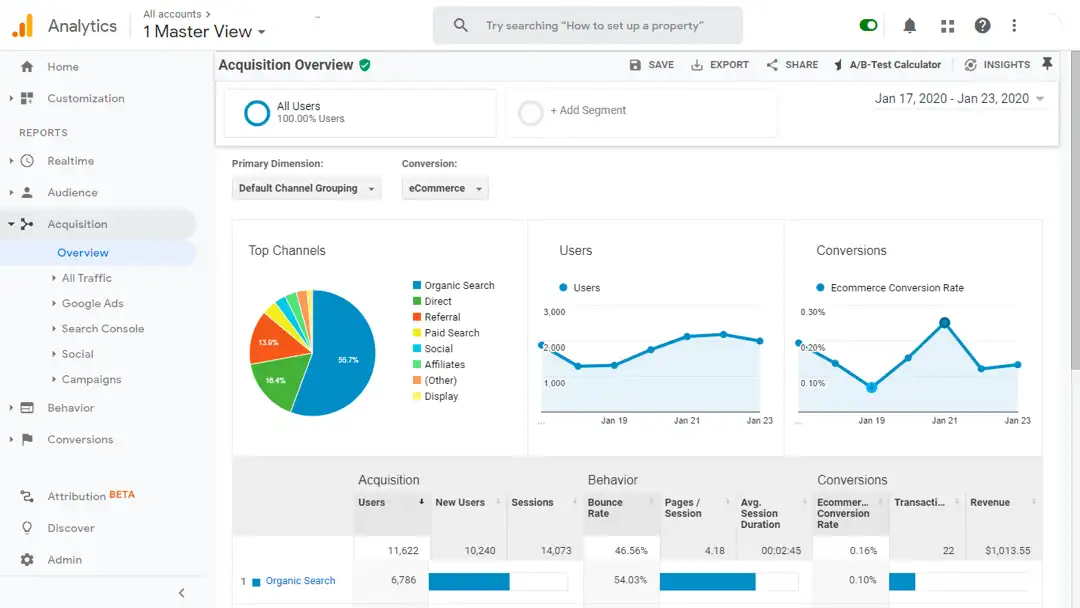
Then you’ll be able to see if specific pages or links are being viewed more than others and how long the average visitor spends on each page of your website.
To dive into the data provided by Google Analytics even further, you can set up conversion tracking, which will allow you to see if specific pages are resulting in conversions (e.g., someone placing an order).
Doing this allows you to view data that is even more specific and gives you an idea of what consumer behavior on your website is resulting in conversions.
For example, if you are selling men’s clothing, you may notice that most viewers are clicking on links for the department – Men, which takes them to a landing page with the explicit purpose of capturing leads for men’s clothing.
Now you know what one of your primary opportunities for improvement is (i.e., the page that is supposed to be converting people into customers isn’t).
You can improve this page, test it against others to find out what works best for you, and then make changes to your live website.
Use heat maps on your website to see how people are interacting with existing content.
Heat maps are another way to analyze how users interact with specific pages on your site (i.e., if they stop on a particular paragraph, click on particular images or even stay on the pages for longer than others).
Heat maps do this by showing you where users are clicking most often.
Heat maps can be used to improve your website’s design and help determine which pages are performing well (i.e., how many people visit them) and which ones need improvement.
Measure your PPC campaign ROI with Google Analytics
Google Analytics takes your SEO efforts one step further by allowing you to analyze the impact paid advertising campaigns have on your website’s performance (i.e., how effective are your pay-per-click ads in increasing site traffic, leads, and/or sales).
The first step is to create AdWords and Analytics accounts. Then, install the Google Analytics tracking code on your website so that you’ll be able to measure the effectiveness of your PPC campaign.
Next, connect both accounts so that Google Analytics will import data from your AdWords campaigns when it is installed on your website. This way, you can see the impact of your PPC campaign on y traffic, leads, and/or sales.
Convince visitors to take the desired action with a call to action
This is probably the most critical part of all website conversion rate optimization efforts – convincing visitors to take the desired action.
Depending on your goals, you will need to design one or more calls-to-action (CTA) into your site’s pages and/or landing pages.
For example, suppose your goal is a simple eCommerce checkout process. In that case, you may only need a single CTA button for the visitor to click to complete the purchase.
However, if you are trying to convince potential customers to sign up for a free trial, then you probably need several CTAs where visitors can choose how they will access the trial (e.g., text or email). Some calls-to-action may even require multiple steps before completion (e.g., first select your preferred site, then enter your contact information to access the trial).
Free Website Conversion Rate Consultation
While we’re on the topic of CTA buttons, here’s an obligatory one for this post. Click the button below for a free consultation and learn how we can help you increase your website’s conversion rate.
You must make it very clear what the visitor should do and why they should take action by using effective wording. For example, instead of just writing “Buy Now,” try something like “Get your new software today!” or “Start enjoying all these benefits now!”.
The point is that you want to convince the visitor to take a specific action, so make sure your CTA wording lets them know why they should do it now.
Be sure to read our article Your Website Call to Action – You Have to Ask.
Create Attractive Lead Magnets to Encourage Visitors to Give Their Email Address
Once you have built a visually appealing website, it is time to begin marketing it.
“What kind of marketing should I use?” The answer to this question depends on the size of your budget and what type of business you are running outside of your website.
For example, if you have a smaller budget, then it makes sense to spend more money on content-focused advertising like Google Adwords.
If you have a larger budget, then you may want to consider other options like:
- Traditional marketing channels like print and television advertising
- Content-focused assets such as eBooks or whitepapers
- Online ad networks like Facebook or Google Adwords (discussed previously)
That said, the “magic bullet” in terms of online marketing is email marketing. By adding an email capture form to your website and then following up with a series of engaging blog posts and/or newsletters, you are more likely to grow your list without having to spend much (if any) money on advertising.
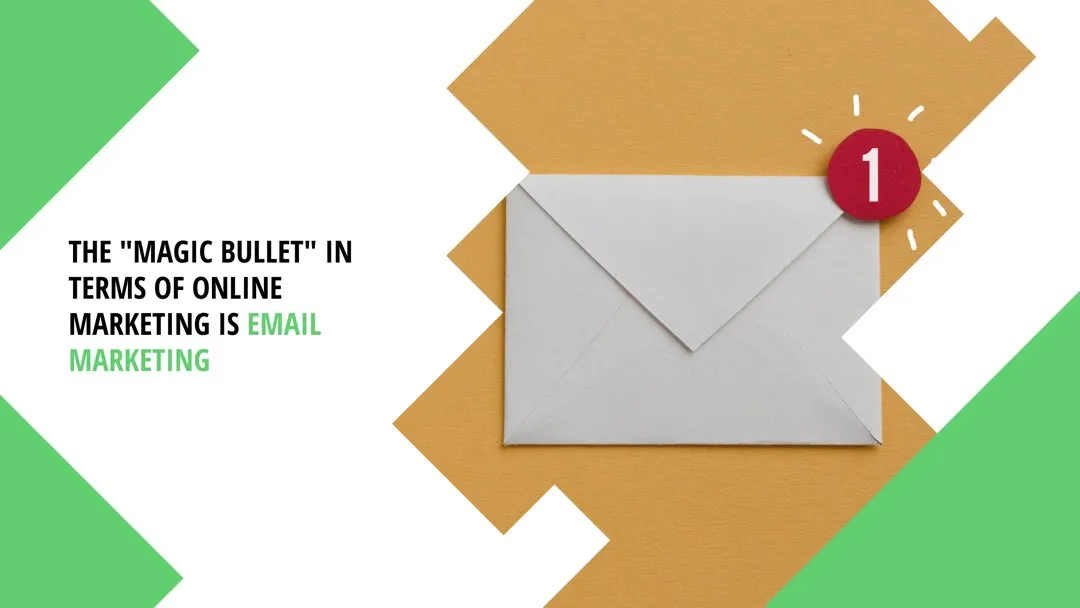
Some reasons why email marketing is such a great lead generation tool include:
- You own the list of email addresses (similar to ad networks like Facebook or Google Adwords)
- Your emails are usually opened and read by prospective customers
- Emails can be used to build an autoresponder series that helps increase the customer lifetime value
That said, we recommend you make a commitment to creating attractive lead magnets that help grow your list through the following suggestions:
- Create “lead magnets” or “freebie’s” that are highly sharable on social media sites (and thus spread virally)
- Create content-focused resources such as eBooks or whitepapers that are great lead magnets
- Make sure your freebie’s set a tone of value and professionalism to help build trust with visitors
- Include an email capture form on every page of your website (and video)
- Make sure that your lead magnet is easy to consume and doesn’t take hours or minutes to complete
- Provide enough value in your freebie to encourage people to sign up for other information on your site (otherwise, they will eventually forget about you).
Just make sure to adhere to GPDR rules when capturing customer’s information.
Show your unique value proposition
To successfully build your business online, it is essential to show your unique value proposition within the first 30 seconds of a visitor landing on your site.
Here are some tips for showing your unique value:
- Make sure you include a video on every page of your website (if possible) with content that relates to your original brand.
- Make sure your content is written in a way that appeals to the different audience segments you are trying to target (e.g., information technology executives, project management professionals, etc.)
- Ensure that you incorporate testimonials from customers who have successfully used your product/service within your website (and video) to help prospects feel more comfortable in making a purchase from you.
- Include graphics that illustrate the problem your product solves and how it works within the solution.
- Make sure you talk about the features and benefits of using your product/service and show how it saves time, increases productivity, or eases pain points for users (this will help build trust with visitors).
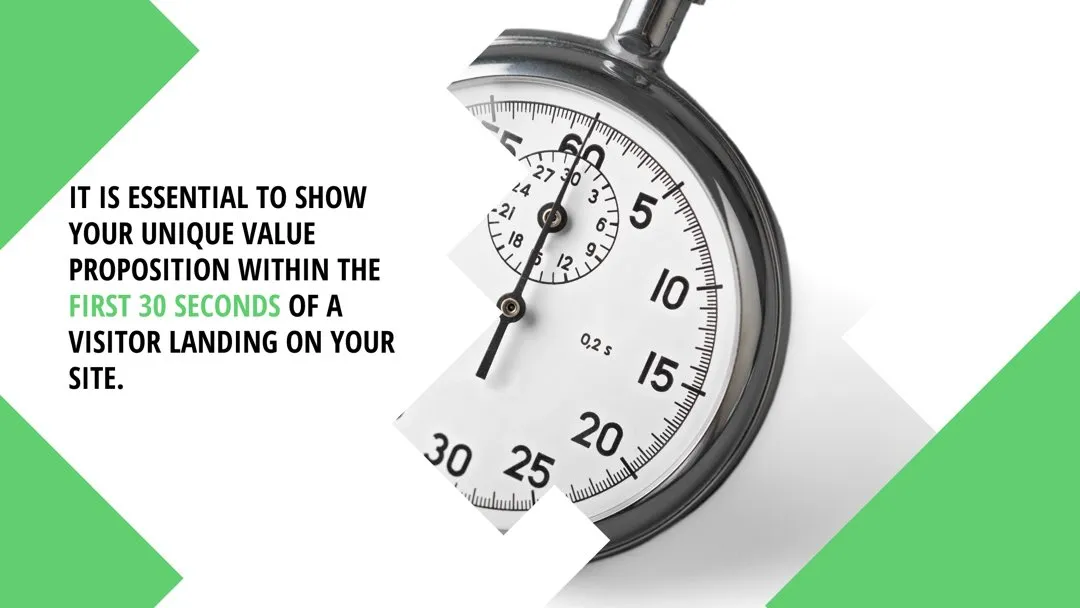
Use Psychology to Engage and Convert Prospects
People act differently online than they do in real life. Often, people will say things on the web they would never say to another person’s face out of embarrassment or fear of rejection.
To help overcome this obstacle with prospects, you have to “read between the lines” and focus on what people are NOT saying but are still communicating.
Here are some suggestions for using psychology to engage and convert prospects in your marketing efforts:
In your copy, speak directly to the prospect’s wants (“you”), not their needs (“I” or “we”). Assume the majority of people reading your website feel the same way they do about a particular problem/opportunity.
In your content, focus on the benefits of doing something (i.e., taking action) over the features of your product/service (“your product will do this for you”). Think about what people really want from your product and what they tell themselves to justify not purchasing it. This requires you to really listen to what your potential customers are saying.
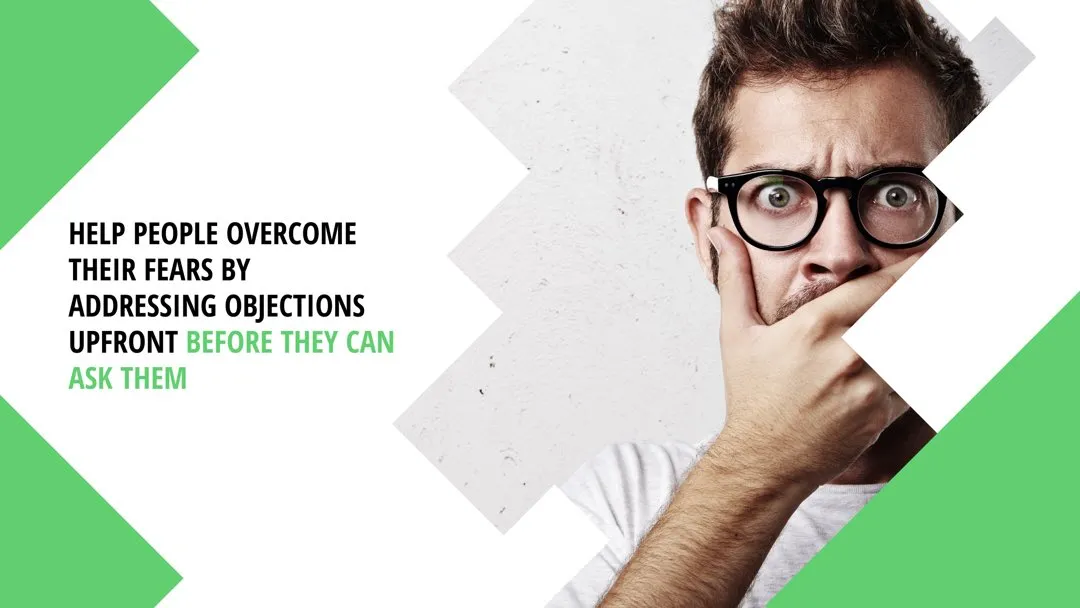
Help people overcome their fears by addressing objections upfront before they can ask them (similar to how Amazon does in product reviews). This will help mute the noise from skeptics and eliminate concerns that might otherwise cause them to leave your site without converting.
Review best-selling books in your industry to find out what types of objections your prospects are most likely to voice about why they can’t afford or don’t have time for your product/service. Then, address these concerns directly on your site so that you reduce the uncertainty in peoples’ minds when making a decision.
Do a survey of people who have downloaded your freebie to find out what objections they have heard from other prospects about why they shouldn’t buy. Then, address those concerns directly on your site before people can even ask them.
Make a list of opposing viewpoints that you know potential customers are likely to hold and address these in your copy (e.g., “I can’t afford it,” “I don’t have time for this”).
When creating a headline, use numbers, statistics, and clear benefit-driven language. Statistics show credibility and help to cut through the noise that comes with trying to market your business online in a sea of similar offerings. Examples: “The top three things you can do to make more money in 2014” or “10% of people are saving 50% on their energy bills with this little-known secret.”
Make sure all of your site’s visual elements communicate a clear benefit. If there is any confusion, the purpose, usefulness, and uniqueness behind your product/service will be lost.
Testimonials from satisfied customers can help build trust with your visitors and influence the buying decision.
A High Converting Website Must Be a Content Marketing Machine
If you want your business to grow and thrive online, you must become a content marketing machine. Whether or not you can acquire new leads using other channels (e.g., SEO, paid ads, email marketing), you must have a steady stream of content at your disposal to use as supporting material.

This is how you will make more sales and create brand awareness on the web (which leads to greater credibility).
Here are some suggestions for creating high-quality content:
- Take a look at the “About Us” section on your competitor’s site and see what they are doing. Create new versions of the same thing, but do it better.
- Go to places like YouTube and look at how other businesses in your industry are posting videos (Here are nine types you should be using right now!) representing their brand (and their target audience). Make a list of top-performing tutorials on YouTube for industry-related keyword queries. Then, create new videos and/or tutorials that are similar but of higher quality (incorporating your brand voice).
- Monitor the topics people are searching for on Google to get an idea of what problems or objections they have about how they do things now in your industry (e.g., if people want to know how to build a website, they probably have money to spend). Once you know what people are looking for, create content (blog posts, videos, tutorials) that addresses their questions.
- Watch how your target customers interact with and influence each other online (e.g., on Flickr or Pinterest). Create new ways for them to interact with/influence each other, but do it in a way that shows off your brand and offers value to them.
- Create engaging contests or polls among your followers on Twitter, Facebook, or LinkedIn so they can have fun voting for their favorites (and you get more exposure). Watch how others are attracting followers and create new ways to show off your brand that are more fun.
- Go to Facebook or LinkedIn groups where people in your industry congregate and post helpful content (e.g., blog posts, articles) regularly so you can increase exposure to new prospects and grow your network.
- Brainstorm with staff members to come up with ways for you to create new content that will appeal to your target customer base (e.g., shoot a short video about how to use your service or interview a professional in your field for a blog post). Once you have an idea in mind, execute it and share the results with others.
Frequently Asked Questions about High-Converting Websites
There are a lot of misconceptions about what makes a website successful.
For example, many people think that the quality and relevance of your content are more important than the design of your site.
But in reality, it’s not so simple. Here are some of the most frequently asked questions about high-converting websites.
Why is Web Design So Important?
Good design is one of the first things people notice when they visit your site, but it’s often not given the credit it deserves as a tool for higher conversions. A good UX/UI (User Experience/User Interface) is essential because it can:
Direct customers to take the action you want them to take (e.g., sign up for your newsletter)
Provide an extra incentive for visitors to download a lead magnet or purchase an item during checkout.
Attract new prospects and create brand awareness.
If your site doesn’t have an attractive, intuitive design, you can hardly blame a visitor for not taking the action you want them to take. It just won’t stand out as much in a sea of other websites.
Who Should Make Your Website?
There are many different approaches to creating a website. Still, it’s better to leave it up to the professionals in most cases. Here are some reasons why you shouldn’t let a cousin or other hobbyist do it.
If you decide to go with an agency or “design team,” make sure they have experience developing sites for your particular niche or industry.
How much does it cost to build a high-converting website?
This is probably the second most frequently asked question I hear: “Why should I care about design?”
The good news is that you can find affordable options for every budget, but it doesn’t mean cheap is always better.
It’s crucial to ensure you get good value for your money, so finding an experienced designer who has worked in your niche before is critical.
How Can I Tell If My Designer Knows What They Are Doing?
There are many ways to tell if you have chosen the right designer for your project. Some questions to ask include:
How much experience do they have with your industry?
Have they been featured in any reputable online or offline publications?
Do they have a portfolio that showcases their best work?
Is there an online presence and social proof for their agency, such as a blog, Twitter feed, Facebook page, etc.?
How Long Does it Take to Make a Good Website?
It all depends on how much the designer knows about your industry and what you want to achieve with your site.
Getting a great-looking website up and running in as little as one month is possible, but many things can cause a delay.
For example, suppose the designer has never worked within your niche or industry before. In that case, they might have to spend time researching the market and trying different designs until they find something that converts well.
Can I use WordPress to build my site?
Absolutely! There are some fantastic WordPress designers out there who know how to make your site convert well.
If you go with a WordPress designer, ensure they have experience and knowledge about search engine optimization (SEO).
How can I increase conversions on my existing website?
While adding some design changes and edits to an existing site is possible, a redesign might be more time-efficient.
A new design will create a clean slate that allows you to make sweeping changes that increase conversions without worrying about how older content on your site might affect the flow and modification of newer pages.
How many page views do I need to convert?
That’s a tricky question. It depends entirely on your goal for the site and whether you are looking for conversions such as purchases, email signups, or newsletter subscriptions.
If your site isn’t converting now, it may be because it does not provide valuable information to your visitors.
How Do I Go About Hiring a Designer?
The best way to hire a designer is by researching, but it’s not the only way. Some people just go with their gut feelings and take whatever they can. If you simply “wing it,” here are some tips for getting good results.
First, ask your friends and family. If you are in a niche or industry with connections, asking around may be the quickest way to find someone who can do quality work at a great price.
Next, you can search online for designers within your budget that seem like they could provide what you need. Just be sure to check their portfolio and online presence (blog, Twitter feed, Facebook page, etc.) before you hire them.
Lastly, professionals such as copywriters or web developers may have connections with designers, allowing them to offer you a better deal if they collaborate on your project.
How do I Pick the Designer That’s Right For Me?
One of the most important factors is how well you work with your designer. If you don’t communicate well or if they can’t meet the deadlines you give them, you will end up frustrated and possibly out of pocket because of missed payment dates.
Here’s a tip: it doesn’t matter how good your designer is if you cannot work well together. Learn more about how clients and agencies should communicate in our recent article, “9 Signs You Should Fire a Web Development/SEO Client.” It’s written to agencies, but the same principles apply.
How Much Should I Pay a Designer?
Hire someone who knows what they are doing and has experience within your industry and niche. If that person can show you their best work, they should be able to charge more for their time since they can be more efficient and produce better results.
Don’t overpay for unproven designers by checking their portfolio, asking about their experience, and getting a feel for how well they communicate with you. A professional designer can charge $150 per hour or more, depending on their work type.
How Do I Know Whether I’m Hiring a Good Design Company?
Again, you can judge this by checking their portfolio for quality work. Still, some more concrete ways exist to tell if the designer will be good for your project.
Ask yourself how well they communicate with you through email or in person.
Can they provide updates and explain why certain things are happening with your site?
Can they provide estimates you can rely on, or are they constantly missing deadlines?
What Should I Look for in a Designer’s Portfolio?
Review each portfolio piece and the brief to see how well it was executed. Ensure the designer has experience with your industry and within your niche.
If they don’t, then that should raise a red flag. Look for original and creative approaches to the briefs.
Are any of them using techniques you haven’t seen before?
They should be able to show you real-life projects if your site is meant to be used as a promotion for something else (such as an email marketing program).
Look for case studies and testimonials. No matter how good a designer claims to be, someone else can (and probably will) say otherwise once you hire them.
A few glowing case studies from happy clients or some great testimonials are signs that the designer has done work for others before and that they were pleased with their services.
What Can I Do to Get the Most out of My Designer?
Communicate, communicate, communicate! Give your designer all you can about what you are trying to achieve with your site.
If it’s unclear, they may miss an important point and make a mistake that costs time and money. Give them a deadline that you can both rely on and don’t be afraid to give them feedback throughout the design phase, as it may save you money in the long run.
Be optimistic! If something doesn’t work for you, let your designer know before they waste their time designing something else. It can save you from rushing to create a final product that won’t be quite what you envisioned.
Conclusion
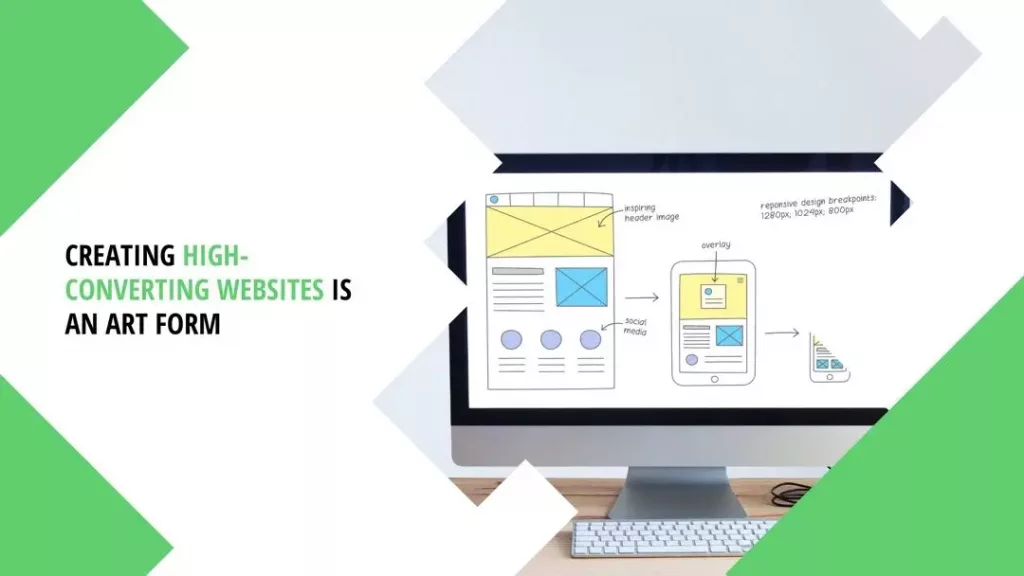
Creating high-converting websites is an art form. Having a great designer can help you to build something far better than you imagined. If your site doesn’t convert well, then you have the wrong designer — or no designer at all. To get great results, keep in mind that communication and positivity are the two most important factors when working with any team member.
Follow these tips, and you’ll be able to work well with a designer and give your business the high-quality site it deserves.
Don’t try to do it on your own. Get a free consultation today with one of our digital marketing experts and see what we can do for you.
